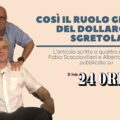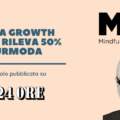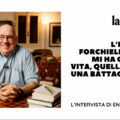In spite of a mildly obsessive time during childhood in which I read tens, maybe hundreds, of spy novels, thrillers and detectives, nothing had me properly prepared for the Kafkaesque intrigues completing everyday life. As the last of a series of adventures involving Italian banking, the latest encounter even involves the Vatican and it has me wondering why people believe in the clearly illusionary validity of market dynamics. No, no, this is nothing like “black” Lodges, the Clearstream Affair or the alleged “Strategy of Tension”. It is something far more incomprehensible, it is human behavior.
Our world seems to inhabit an odd mix of behaviors where Huxley’s “Island” and “Brave New World” happen at the same time and in a seemingly random fashion has individuals captured in a nearly mechanical set of activities. Almost robot-like do people carelessly de-individuate themselves in order to dehumanize others, similar to how we all, just for a moment, become psychopathic when we “switch off” as the daily news presents us with a disaster we deeply care about but can’t do anything about while watching the news. Sufficiently many rational arguments are available to justify ones uncritical indifference about what seems to be “someone else’s problem” so that one can at least uphold one’s own identity by thinking an excuse is a reason. With a bit of luck later in life a more embracing sense of humanity replaces out-group biases, but many people appear to spend a large part of their life enforcing rules of behavior they assume people adhere to while not realizing such bureaucratic conformity is actually created by their very own actions and can often have degrading and humiliating results.
Some six years ago a good friend thought it was wise to follow a small investment advice of the bank, arguably the largest banks in Italy. For just a reasonable number of monthly payments she would own a commemorative medal for the anniversary of an significant Renaissance sanctuary located at what was once an Etruscan oracle’s sacred site. And so she did. Fast forward to the present and we are several years into a worldwide economical shift resulting in local crises, recessions and major opportunities for other regions on our globe. Financial deregulation allowed the same financial institution to mix both savings and investments, while in the socio-economic context all regulations assume these to be different sides of the same coin, representing the ebb and flow of the economic tides. Paradoxes such as winning by losing are reserved for love and war, not the world of finance, the US “common law system” or an entrepreneur’s idea of common sense. Confidence and fidelity crumbled when a fairly normal deflation of the US housing bubble, a 15 billion dollar problem as foreclosure filings spiked near the end of 2006, stampeded and as mistrust snowballed along to make the US subprime mortgage crisis happen it’s impact ballooned to possibly a thousand times its original size when banks stopped lending to each other near the end of 2007 and started the credit crisis. If the spike with foreclosure filings had been dealt with by purchasing them, downgrading en coming up with a reasonable mix of affordable payments and social housing, the costs may have been a few billion dollars, say twenty dollars for every US citizen, but instead has wasted trillions in losses and missed growth. It may by now be obvious that despite what is normally thought no one is in charge, and although some are born to sweet delight there is no ruling class. In the end we have saved the circus, but ruined the artists, and all we have left are a few prompters turned ringmaster and a handful of clowns.
Be that as it may, here’s this good friend with her commemorative medal, and due to personal circumstances not entirely isolated from the global situation she wishes to resell it. Not knowing the intricacies of international coin trade, the internet is only helpful in verifying that this has been a very stable collectors market, largely unaffected by the current economic climate, but it doesn’t provide enough information to come up with an overview of nearby commercial coin dealers, let alone with evaluations or comparisons concerning their performance. Given the present-day popularity of selling one’s own, or someone else’s, family jewellery along with the sobering experience of spontaneous hyperinflation the moment a local figures out you’re a foreigner and insists you work at a nearby international research facility, the bleak realization dawns that given these circumstances the medal is worthless. Any sale via a shop is completely isolated from any market dynamics whatsoever, and any valuation would be completely arbitrary, whether a potential buyer would offer the material value or what was initially invested in it. And the bank, of course, they were only facilitating the initial sale of this commemorative medal and evidently as an intermediary they do not share any responsibility as far as the commercial agreement goes, and beyond a full minute of possibly even sincere sympathising that is where their commitment stops.
The problem isn’t so much that the medal is not worth anything, but it is simply “too young”, it hasn’t been traded often enough to have built up enough informational, geo-economical and historical traction in the collective mind. It is still too disconnected from the rest to even speak of market dynamics. Unfortunatelly it doesn’t turn the medal into a much desired small amount of more acceptable coinage, yet if made perfectly clear the “law of supply and demand” is a behaviouristic convention. There is no market for any free price mechanism to act upon; all there is is the multiplicity of all of our own actions and reciprocal altruism to guide us towards fairness. We have come to accept an imaginary marketplace with seemingly reasonable workings which we can refer to during individually isolated “over the counter” commercial transactions or we can engage in a collective ritual acting as if this fantasy is an utmost important part of authentic reality. Either way, “the market” doesn’t really exist beyond its behaviouristic enactment, just like statistics don’t really exist, and although we can enforce people to behave like the economy is a steam engine, it serves to acknowledge its behaviour is much closer to that of a living organism, possibly even a conscious one, or even multiple, adding up to a “society of mind” as Marvin Minsky summed up decades of experience with artificial intelligence and robotics.
Clearly not all of economic science is a complete idealization or a shared idée fixe, but if impressions and psychology are such a great part of the overall picture, aren’t we creating and sustaining a crisis by the obsessive need to try mould the economy into a model that doesn’t fit anymore. In the years of running a small business excessive bureaucracy in retail banking has only resulted in magnifying problems. When some big corporation comes to a grinding halt and you happen to get sucked into its problems, the corporation is helped with the assumption this trickles down along its value chain, of which you are a part. Yet risk averse banking policies are trying to shield them from any damage and as your company is too small to be important and form an exception, you are treated like a criminal, being punished with fines and unreasonable loans that charge so much interest that the debt doubles on a yearly basis. While some reorganization turns your closest business contacts unethical as the new CEO thinks his machete is a surgeon’s scalpel and gentleman agreements nullify while expenses are not paid, at the moment you can really use some help the processes lock down on you before you can switch gears and shift lanes. Double blind banking policies are destroying the SME sector in favor of “shareholder value”. At least in a criminal court you’re innocent until proven guilty. However nasty, it isn’t even bad intent; it is simply that most of the standard economical insights were developed even before the Second World War, after which lots of effort was put in trying to make these insights true.
How can we update our behaviour to fit a world where globalization has turned it into interdependent interconnectedness? Countries like China and India have been as kind as to open their borders for importing obsolescence, those bits and pieces in our economical apparatus that were not considered cost-effective. This allows them to quickly catch up and grow towards Western standards of living but seems to have them now facing up to the same creeping issue of on-going automation as the manufacturing process is becoming “softwareized” with modular robotics, general purpose machine tools and 3D printing which scope is starting to range from designer molecules for meta-materials up to printing an entire house or aircraft wings. Within the next ten years we’ll enter an era where physical objects, their manufacturing and distribution are being untied from its infrastructural bonds, and like an mp3 recording of an actual musical performance you can play it anywhere you like. As technology progresses and automated factory halls grow so flexible they can effortlessly change between different products, the uniqueness of the manufacturing process itself will go through different stages of diminishing distinguishability until it is fungible, just like any television screen can display everything from a book to a picture to a movie. Unquestionably these future factories will specialize to some degree, just like it is more efficient to view a movie on a screen instead of printing a flipbook, but beyond maybe a handful of specializations softwareization as well as the modularization of manufacturing tools and product parts will in turn accommodate the commoditisation of parts so to increase their degree of interchangeability. Consequently the boundaries between design, prototyping and production will become increasingly vague, only limited by the number of steps through a series of general purpose manufacturing tools while these same tools can fabricate molds and scaffolds when gearing up for small series production. Physical limitations are reduced by replacing electro-mechanical parts by some software running on a computer inside a network, allowing for regular updates and improvements without having to replace or even stop the machinery. Although it is not a “one size fits all” solution, it will dramatically change the manufacturing landscape, but not only that. A split is caused in some product characteristics which until now have been an implicit whole, “how it is made” and “what it is”. Between competitors the shrinking value of the production process will cause a great reduction of the immediate rivals, while for end-customers this means the product’s fading rarity will evaporate its illusionary exclusivity which up to recently has been upheld by geographical isolation.
Although the front page only has so much space, we need to move towards new ways of dealing with commerce in an information-rich environment. Machine translation services are becoming so proficient that soon we can surf the internet in our language, while mobility helps spreading the internet over the earth’s surface both for communication and augmented reality, eliminating yet another three boundaries. If we go shopping, either online or offline, we can do so embedded within the multifaceted context of the internet and the shopping experience cannot be seen in an isolated manner anymore as it can easily be juxtapositioned in a screen-by-screen comparison with third-party recommendation services which will drastically intensify the corrective workings of openness. It is not going to suffice to continue with buzz management, neuromarketing and “made to break” planned obsolescence while hollowing out one’s business with rolling waves of cost reductions by applying Six Sigma outside its meaningful context. Needless to say that fashion and advertising will not disappear and there will continue be plenty of opportunities to become famous for being famous, or provide a sense of exclusivity by acting exclusive, but exclusivity itself is to become less exclusive as mass personalization becomes the new norm. Universality does not equate to uniformity, just like a multiplicity of mutualistic humanism does not equate to socialism or communism. Economic models will need to deal with this and move away from price and quantities as life’s warp and weft, just like leaving the gold standard behind and adopting other currencies like oil, Eurodollars, Bitcoins, Farmville Cash or pre-paid cell phone cards as used in Africa. In the end money is simply a collective ritual and if enough people accept it there is no real reason why one has to stick to geopolitical borders while interest-driven networks are shaping globalization, even if it sometimes is just a game.
Beyond tribal altruism lies a vast universe of opportunities. It may not involve competition in the traditional sense, but if we extrapolate basic human needs of play and creativity, identity, self-expression and personal freedom, there are ample reasons to come to profitable mixes of inimitability and appropriability eventhough fast depreciation of its perceived rarity will surely affect the durability of the offer. The world is moving beyond things towards events, where a product is not “frozen” in temporary versions anymore, but more a snapshot in the course of ongoing upgrades, an actualization of a set of evolving qualities. Besides the obvious superbrands, the majority of goods and offerings will shift from brand-based selection to quality-based definition. The rise of corporate social responsibility and ethical consumerism are clear signs of the shift from an information-poor to an information-rich context.
Ever since picking up a stick cultural development and technology have become interwoven to one degree or another, yet when experiential insight of tools, technologies and methods evolve into a science and when even this body of knowledge is abstracted, systematized, formalized and subsequently shared it usually results into large societal consequences. Several information revolutions ago, in the 1840’s, with the steam-driven rotating printing press providing the means for advertisement driven ‘penny press’ daily newspapers to take off along with intensified use of the telegraph. The following sixty years saw great shifts as far as small-scale unions, syndicates and cooperatives began to emerge, often providing mutual support in the form of health insurance or a widower’s pension. Later on in the 1920’s commercial broadcasting started covering radio and television, while telephony took off for personal exchanges. This pretty much laid the foundations of many of today’s customs. With the internet we have entered another information revolution which appears to rapidly overtake and envelope these existing means by offering an adaptive mix of personal and general information provisioning. With television facilitating the intensification of advertising and molding public opinion, the last 90 years have seen an increased effort in shaping us humans as consumers. Yet that is only conditional conformity, the latest recession shows a large many people who have come to understand the overwhelming magnitude of the issues we’re facing. While some turn to learned helplessness and others turn to learned egotism and ethical bankruptcy, fortunately the majority is trying to make this world a better place with whatever means we have at our disposal. Instead of trying to change politics, people have started to use their collective power as consumers to turn these issues inside out.
Like many emergent initiatives the voices of grassroots ethical consumerism are manifold, and with our limited attention span we are troubled it has no clear voice yet. Very much in line with traditional commerce trade mark certificates and labels have been established. Often uninformative unless doing some research in order to guarantee the aspired qualities they mostly depend on closed-group exclusivity due to organizational limitations. No matter what good intentions, any label that is just a logo acts like a mask and will have no further significance other than establishing a recognized brand, a shortcut representing a trust token to give the appearance of certain qualities. This too will have to adapt to an information-rich context. Still, labeling is the easiest way to provide some information-rich context to an article, so instead of using a logo a label can used to provide an open informative rating on qualities that people value, a twenty-first century price tag which can easily demonstrate a product’s track record.
A behind-the-.scenes with exclusivity-based initiatives which have reached an apparent status of ethical superiority, such as Fairtrade and open source, paints an entirely different picture. A simple visual rating however does not have a threshold to adoption, it just informs. Albeit of course support with a system that can measure, weigh and map interdependencies, possible alternatives and consolidate different rating systems. To make such a label obvious for the critical consumer it will have to give some indication of improvement measures. When a farmer switches to bio-agricultural, it will take a number of different steps to get there, and each step will represent one or more seasons. It should be integral to a good labeling system that such steps are rewarded, even though in an indirect form where consumers “vote with their feet” based on the available information. In order to enhance the effect and consequences such a label has to promote chain-accountability along the supply chain, so that “wrongs” bubble up to the surface and can be corrected. Given our collective past, a system based on punishing “bad” deeds is not effective, it introduces deception as very often today’s “wrongs” are simply yesterday’s “rights”. That doesn’t mean we should forget about all mishaps, close our eyes for negativities or dwell around in an illusionary limbo of positive thinking, but it just means the label informs on whatever actual effort is being done to improve the current situation. It just shows status and trend movement. It is not a certificate. And to ensure information neutrality the rating system is maintained by an academia-run international consortium, ideally.
Analyzing ethical consumerism “three dimensions” become apparent by which people weigh and valuate. Three dimensions at three “depths”, which form an interwoven whole so that every commercial activity can be caught and expressed. Ecological Footprint, Quality Effort and Solidarity are gauged for a product or service itself, its primary resources (how it got to be), and the sum-total of the value chain (all other dependencies in the supply and demand chain as of the 2nd degree). This sum-total is the logical sum of the status and trend movements of the supplier’s suppliers, and so on, and even though the final product may be tens of trade movements removed from its original resources, if at any of these companies is polluting the environment or exploiting the local population, this sort of behavior will bubble up in the overall status.
The three dimensions, the ecological, utilitarian and social footprint, translate to nine different criteria if we spread them over three” depths”:
- Ecological Footprint: Is this fair trade with Nature?
- Recyclable: Can we reuse and reprocess parts of the product?
- Bio-convertible: Can we reuse and reprocess the core materials?
- Environmental Impact: Did producing it add or subtract from natural resources?
- Quality Effort: Is this the best you can do?
- Optimal Design: Is it built to last or built to fail?
- Systemic Usefulness: Are the production means as good as it gets?
- Sustainability: Does it make this world a better place?
- Solidarity: Does the team-spirit go beyond the in-group?
- Humaneness: Is the product safe, harmless, helpful, mindful, constructive?
- Fair Trade: Have commercial arrangements been fair towards best effort?
- Social Responsibility: Have all people involved been allowed to add value?
In a simple table layout, this looks like below.
| Product Itself | Primary Resources | Sum-total Value Chain | |
| Ecological Footprint | Recyclable | Bio-convertible | Environmental Impact |
| Quality Effort | Optimal Design | Systemic Usefulness | Sustainability |
| Solidarity | Humaneness | Fair Trade | Social Responsibility |
Something like this can simply be translated in a label, with color-coding for the status and some symbols for the trend, such as ↓, ←, ↕, → and ↑, signifying the efforts as failing, worsening, breaking even, improving or excelling. Is that so difficult to achieve?
Although such a label is purely informative, it can easily be made to promote chain responsibility and prevents any shell company construction from obfuscating mishaps. While tens or often even hundreds of companies are involved with a single product, the interconnectedness and interdependencies are mostly invisible, eventhough this may be of great significance to us.
Using a sum-total helps to highlight collective mishaps, like cap-and-trade allows for smearing out pollution over many players, so that it seems like each individually only pollutes a little but on the whole it adds up to the same old environmental burden. Even though statistics can be used to blur out the effects, pollution is often locally concentrated with clear effects and using the right sort of approach (e.g. power laws instead of normal distribution), it is very much possible to construct a rating system where this does not disappear by using a convenient set of measurement. Another effect of using such an approach is that it exposes collective rituals such as how oil prices are more or less self-fulfilling prophecy as every barrel of oil is traded some 250 times until it reaches “the market price”, after which excess tax and value added taxes are being applied, making a liter of gasoline to be priced at nearly two euros, whereas the real costs are just a little less than twenty-five cents. Needless to say, if oil wasn’t traded so often and in such large quantities, it would not act as money as store of value and measure of value, but does this value come from the oil or from the trading? Usually if business scales up the price goes down, like in any “economies of scale” scenario, so traders can ignore all the facts concerning existing reserves, OPEC forecasts, projected usage saturation, bio-engineered variations (oil is “algae poop”) and more cost-effective solar power in the form of light-sensitive spray-on coatings, but the price of oil is bubble waiting to burst. But that’s a different story, better suited for another time and place.
Clearly, the ethical objective is to stimulate improvement. If a product has a positive contribution then the score moves towards ‘good’ or ‘excellent’. For example, reusing different sorts of garbage and waste material is likely to score above neutral because its scope covers both solving the problem of piling up garbage, as well as providing a means to recycle the base materials which lessens the burden on e.g. mining for ore. Or an online bookshop plants a tree for every book they resell, although they clearly didn’t have to do that, but it overcompensates for the paper usage. It would definitely make me want to buy at their store more eagerly than at some other store. If morality has a biological basis, then surely a more natural, personal, set of values may serve the coming age. If the price is right, of course, that goes without saying.
















